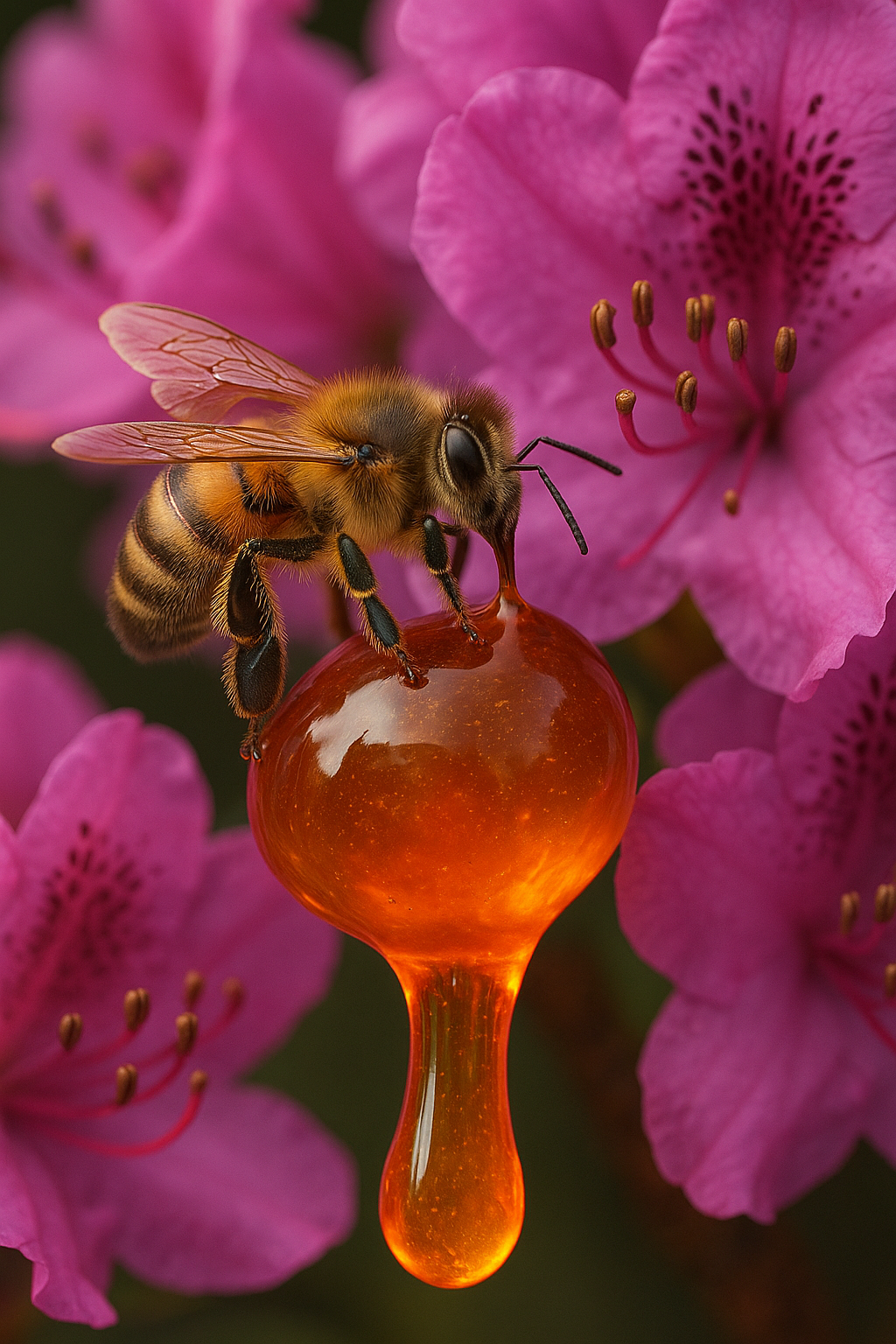Mad Honey

mad honey, giant bee, rhododendron flower nectar
“mad honey” (μείλι εἰλιγγιῶδες) was known to the Ancient Greek medical writers
The phenomenon we call mad honey — honey poisoned by grayanotoxins from Rhododendron and Azalea — is explicitly known to Hippocratic, Aristotelian, Xenophontic, Dioscoridean, and later medical authors.
They do not use one standardized technical term, but they describe:
- Vertigo–honey,
- Narcotic honey,
- Honey causing staggering, vomiting, cold sweats,
- Honey that “confuses the mind” (φρενῶν ταραχή),
- Pontic honey specifically as dangerous.
The earliest and clearest descriptions
Xenophon — Anabasis 4.8.20–21 (c. 370 BCE)
He gives the most famous classical account of toxic honey near Trapezus:
“Honey from the combs produced a strange sickness: all who ate it acted mad.”
Symptoms he lists:
- Vertigo
- Vomiting
- Incapacity to stand
- Temporary paralysis
- Recovery in 24 hours
This is textbook grayanotoxin poisoning.
Aristotle — Historia Animalium 9.40 (c. 340 BCE)
Aristotle describes toxic honey from the Pontus region:
“A peculiar honey… causes drunkenness and derangement.”
He attributes it to flowers of a certain shrub — likely Rhododendron ponticum.
Theophrastus — Historia Plantarum 3.18.5 (c. 300 BCE)
Theophrastus explains why Pontic honey is poisonous:
“From the nature of the rhododendron and andromedê shrubs.”
This is the earliest botanical identification of the correct plant source.
Dioscorides — De Materia Medica 2.103 (1st century CE)
From the ancient medical corpus.
He describes poisonous honey:
“Pontic honey… from the rhododendron plant.”
Symptoms listed:
- ἔμετος (vomiting)
- ζάλη (dizziness)
- σκότος τῶν ὀφθαλμῶν (darkness of the eyes; visual distortion)
- ψυχρὸς ἱδρώς (cold sweat)
- ἀποπληξία ἐοικώς (“stroke-like paralysis,” i.e., collapse)
He classifies it as pharmakon dangerous to ingest but (importantly) potentially medicinal in small, controlled doses.
Galen — De Alimentorum Facultatibus 1.37
Galen distinguishes ordinary honey from:
“The inebriating Pontic honey.”
He notes it can cause:
- ἐξέστηκεν ὁ νοῦς (“the mind stands outside itself”)
- κατάλυσις τῶν κινήσεων (collapse of motor control)
Again: perfect match to grayanotoxin symptomatology.
The Hippocratic Corpus (5th–4th century BCE)
Not explicit as “mad honey,” but several passages refer to honey causing:
- εἰλίγγους (vertigo)
- φρενῶν ἀλλοίωσις (disturbance of the mind)
- σκοτοδινία (dark-vertigo)
Given geographical circulation, these likely refer to the same thing — though the Hippocratic authors do not give the explicit botanical etiology like Theophrastus or Dioscorides.
Summary: What the Greek medical writers knew
They knew:
- Honey could become poisonous from certain mountain shrubs.
- Chief offenders: ῥοδοδένδρον (rhododendron) and ἀνδρόσημον (Andromeda polifolia).
- The poisoning is non-fatal in most cases.
- The intoxication is temporary (usually a few hours).
- The symptoms are:
- paralysis or collapse
- vertigo
- visual distortion
- sweating
- madness/frenzy/derangement
- vomiting
Exactly identical to modern toxicology.
And:
- They used small amounts medicinally — especially in pharmaka that induce altered states, sedation, or purgation.
Applications
The properties of Pontic honey yield controlled, time-limited delirium.
Galen’s phrase:
“the mind stands outside itself”
- is precisely the language of ec-stasis (ἔκστασις), central to mystery-rite pharmacology.
Dioscorides explicitly permits low-dose ritual/medical use.
Ancient cults knew plants that caused derangement + paralysis + visions, and Pontic honey could easily play a role.